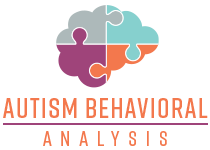Autism, also referred to as autism spectrum disorder (ASD), varies across different people. It’s a developmental condition that impacts how people communicate, interact with others, or behave. The signs of autism vary depending on its severity. Autism behavioral analysis enables doctors to establish the extent of the condition before recommending an autism spectrum disorder treatment program.
What Are the Signs of Autism?
Some children experiencing this condition begin to show the signs as early as a few months after birth. Others exhibit healthy development only for the symptoms to start manifesting when they’re a few years old. The DSM-5 describes three types of autism: first, second, and third levels, depending on the severity and support that an individual needs to recover.
Autism is a broad condition; some children may experience severe issues, but others will not. Common factors in the different levels of autism include social skills, behaviors, and communication; these set the boundaries between individuals experiencing autism and healthy ones.
Poor Social Skills
ASD children have difficulties interacting with others. Problems related to social skills are the most common challenges that they exhibit. They desire to establish strong relationships with other people, but they lack elaborate communication skills.
If someone is affected by ASD, there are several symptoms to look out for, including:
- Inability to respond to their names by the time they’re one-year-old
- Little or no interest in playing and having conversations with peers
- Preferring to be alone than in the company of loved ones
- Avoiding eye-contact when holding a conversation
- Disliking if someone comforts them when they’re feeling upset
- Rejecting most forms of physical contact
Communication Problems
According to WebMD, approximately 40% of autistic children don’t talk completely. On the other hand, about 25% to 30% develop language skills that later disappear. Other autistic children develop the ability to speak only later in life.
Common signs of autism that are related to communication include:
- Slow development of language skills and speech
- Flat, sing-song, and robotic speaking voice
- Repetition of one phrase in communication
- Experiences problems with pronouns, for example, mistaking the use of ‘you’ and ‘I’
- Rare use of gestures or avoiding them completely
Inability to detect sarcasm or sense of humor in a speech
Unusual Behavioral Patterns
ASD children act in an unusual way besides possessing unique interests. Such behavioral problems include:
- Repetitive behaviors, for example, flapping hands, twirling, and jumping
- Displaying hyper behaviors and constant pacing
- Getting fixed to specific activities or objects, for instance, staring at a car wheel for too long
- Having difficulty in adjusting to new routines or changing environment
- Acting without adequately thinking about the consequences
- Short attention span and aggressive behaviors
What Is the Diagnosis for Autism?
Studies reveal that at least 30% of parents of children with autism discover the condition when they have attained one year. Over 70% of parents find it when the child is two years. Children who have ASD continue to display the symptoms, although they can improve as they advance in age.
Diagnosis of ASD is different because it doesn’t require blood tests, scans, imaging tests, and other common forms of medical diagnosis. Your healthcare provider will consider several factors in the examination, including communication skills, behavioral problems, and family medical history.
Conclusion
At an autism treatment center, you’ll answer several questions focusing on different aspects of your autistic child. Diagnosis and appropriate autism spectrum disorder treatment programs will depend on the most consistent symptoms. Different levels of autism require distinct management plans. In general, ABA therapy programs help to manage the signs of autism and improve overall health.







